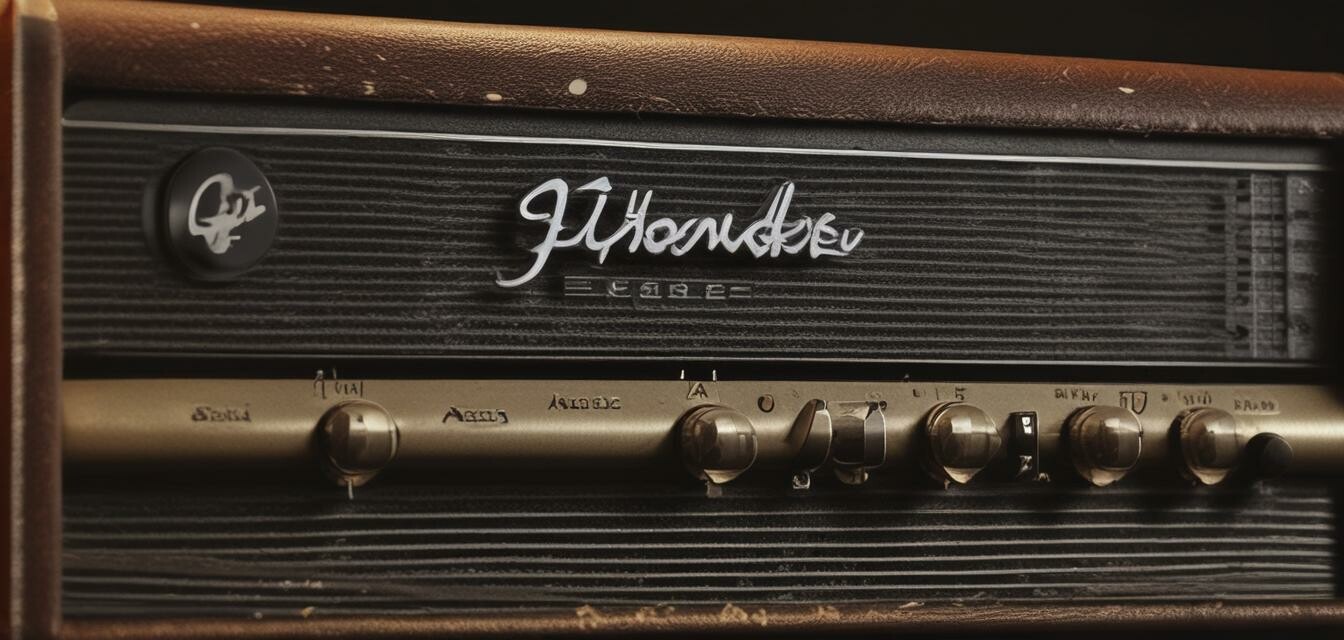
Fine-Tuning Your Sound: EQ Settings for Fender Guitars
Key Takeaways
- Understanding EQ settings can dramatically improve your sound.
- Every Fender guitar and amplifier combination has unique tonal characteristics.
- Try using different EQ settings to find your perfect tone.
- Regularly adjusting your EQ can enhance your playing experience.
When it comes to achieving the perfect sound from your Fender guitar, the secret often lies in the EQ settings of your amplifier. Fine-tuning your EQ can unlock a world of tonal possibilities, enabling you to find your unique sound. In this article, we’ll explore expert tips on how to effectively use EQ settings to enhance your Fender guitar and amplifier setup.
Understanding EQ Settings
EQ, or equalization, is the process of adjusting the balance between frequency components within an electronic signal. In simpler terms, it allows you to boost or cut certain frequencies to shape your guitar's tone. Most amplifiers, including those compatible with Fender guitars, come with a variety of EQ controls.
Common EQ Controls
| Control | Description |
|---|---|
| Bass | Adjusts low-end frequencies; boosts or cuts the “thump” of your guitar sound. |
| Mid | Affects the middle frequencies; crucial for presence and clarity. |
| Treble | Adjusts high-end frequencies; controls brightness and articulation. |
| Presence | Enhances higher midrange frequencies; provides more definition. |
Finding Your Unique Tone
Each guitarist's sound is unique and depends on multiple factors, including playing style and musical genre. Experimenting with your amp’s EQ settings is essential to discover tones that suit your preferences. Here are some tips to help you in your quest:
Start with Flat Settings
When starting out, set all EQ controls to the center or “flat” position. This gives you a neutral tone to build from. From here, make small adjustments to hear how each setting impacts your sound.
Use a Reference Track
Play along with a favorite song or reference track and adjust your EQ settings while listening closely. This can help you gauge what adjustments need to be made to get closer to your desired sound.
Consider Your Instrument
Keep in mind that different Fender guitars have distinctive tonal qualities. For instance, a Stratocaster may require different settings than a Telecaster. Experiment with each guitar to find a setting that complements its sound.
Tips for Various Music Styles
Your genre of music will also influence your EQ settings. Here are some recommended adjustments for popular styles:
- Rock: Boost mids and treble for clarity, cut bass to avoid muddiness.
- Blues: Enhance mid frequencies for warmth, keep a balanced tone.
- Jazz: Emphasize bass and warmth; reduce treble for smoother sounds.
- Pop: A well-rounded tone with slightly more presence for brightness.
Maintaining Your EQ Settings
Just as you adjust your guitar’s tuning before each session, consider regularly evaluating your EQ settings. Factors such as the environment, new equipment, or different guitars can change what sounds best. Here are some maintenance tips:
Beginners Section
- Keep a log of the EQ settings you like for each guitar and style.
- Take notes during practice sessions on what works and what doesn’t.
- Don’t be afraid to make bold adjustments every now and then — you might stumble upon a sound you love!
The Role of Effects Pedals
Effects pedals can greatly impact your overall sound and should be considered when adjusting your EQ. For instance, adding a distortion pedal may necessitate lower settings for treble to keep things from sounding harsh. Similarly, modulation effects can soften the bite, allowing for boosted mids.
Conclusion
Fine-tuning your EQ settings can transform your Fender guitar experience. By understanding your amplifier’s controls and experimenting with different settings, you can achieve a sound that truly reflects your musical identity. Don't hesitate to explore, and most importantly, enjoy the process of discovering your unique tone!
Pros
- Improves overall sound quality.
- Allows for personalized tonal adjustments.
- Enhances the playability of your Fender guitar.
Cons
- Can be overwhelming for beginners.
- Requires an understanding of sound frequencies.
- May need frequent adjustments based on different setups.
Further Reading
To continue your journey to mastering your sound, check out our other articles on Expert Tips, Buying Guides, and the latest News and Trends in the world of Fender guitars.